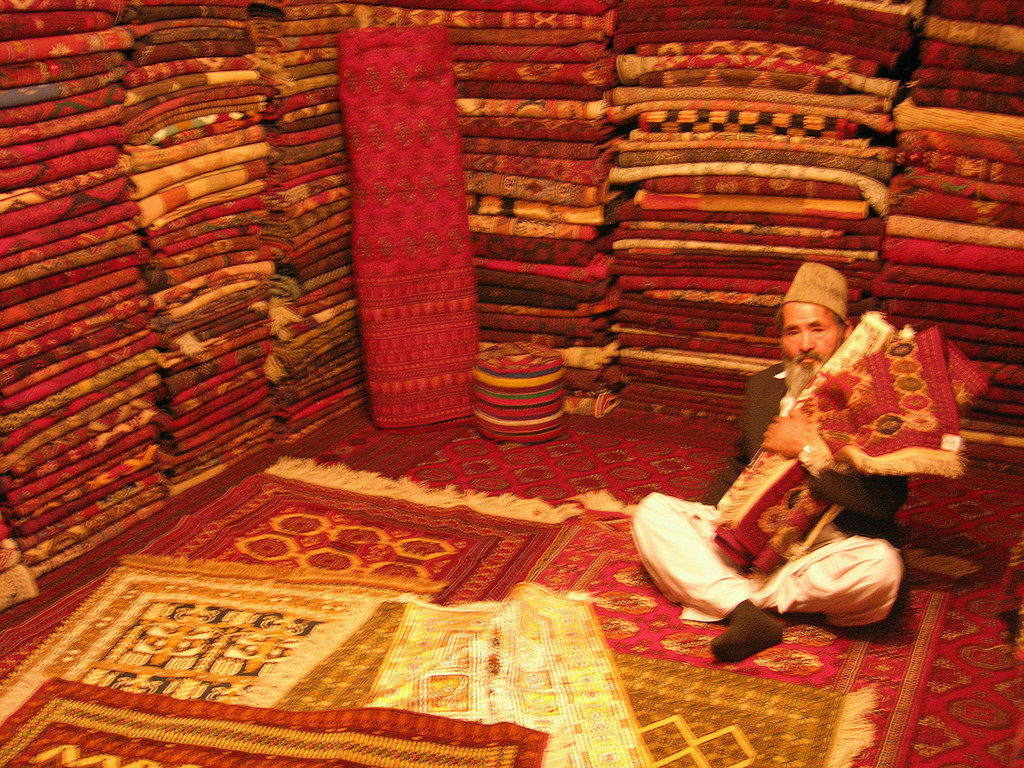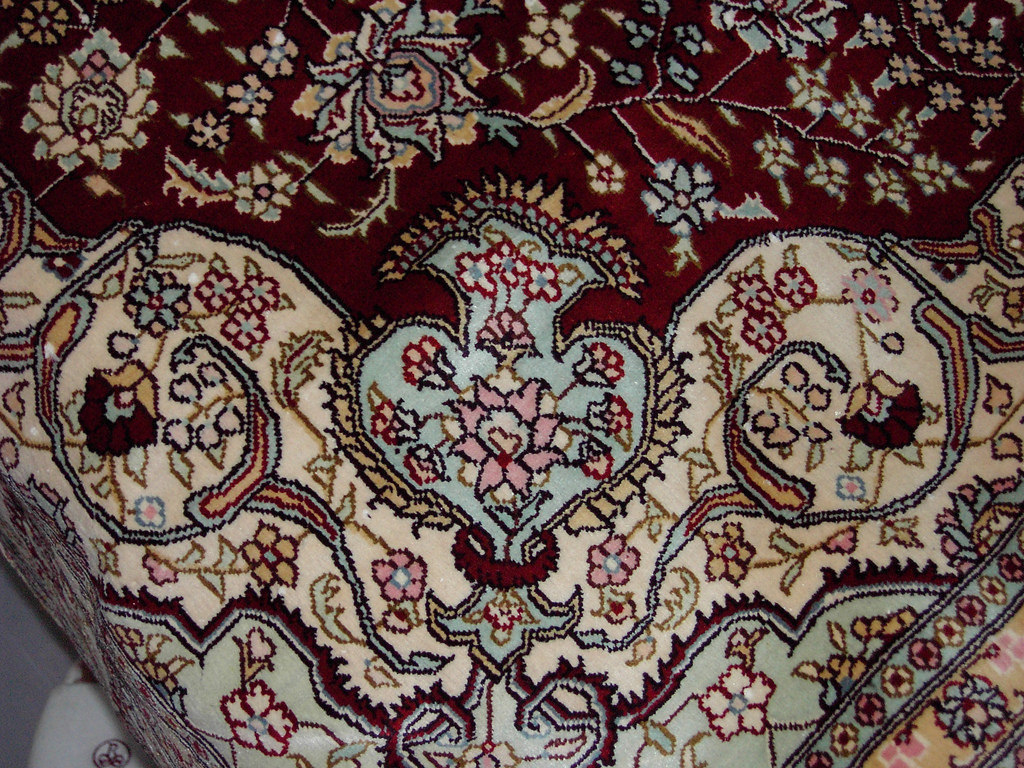Visitors to Washington, DC between March 2016 and October 2017 had the opportunity to experience a rare and special showcase of traditional Afghan craftsmanship. During this time, the Freer-Sackler Gallery at the Smithsonian Institution hosted a unique exhibit entitled “Turquoise Mountain: Artists Transforming Afghanistan.”
This truly special event marked one of the first times that Western audiences were able to get a glimpse of Afghanistan’s newly-revitalized arts and crafts scene. This sector has been steadily growing in recent years as a result of strong local and international support, and the hard work and dedication of Afghanistan’s many talented artisans.
The Smithsonian exhibit presented a stunning array of beautiful works across five artistic disciplines, from exquisite pieces of jewelry to boldly carved wooden panels. However, perhaps the most visually arresting component in the collection was the Afghan History Carpet.
Featuring 25 different colors twisting and winding in intricate patterns across a surface area of 17.5 square meters (nearly 190 square feet), the Afghan History Carpet is more than just a rug. As its name implies, it’s the story of Afghan carpet-weaving captured in textile form. Here’s what you need to know about this amazing work of art.

Image courtesy Carl Montgomery | Flickr
It tells a story that’s thousands of years old.
The Afghan art of carpet-weaving is a practice as ancient as it is complex. For thousands of years, different tribes across the country have made intricate rugs by hand. Craftspeople follow an intensive, multi-step process, including raising and shearing sheep, preparing dyes from plants that only grow in or near Afghanistan, dyeing the wool, and finally, weaving the patterned carpets over a period of many months (or even years in some cases).
This process remained relatively unchanged until just a few decades ago. At that time, ongoing conflict and occupation decimated many traditional arts and crafts practices in Afghanistan, including carpet-weaving.
It uses a wide range of traditional and historic patterns.
One of the things that makes the Afghan History Carpet so special is that it incorporates an array of different traditional design motifs. Historically, each carpet-producing village or tribe in Afghanistan had its own distinctive way of constructing carpets and its own unique patterns.
The Afghan History Carpet captures these individual identities and traces the evolution of carpet-weaving in the country by incorporating 25 of these motifs. These include the central medallion of the Beshir tribe, the cross motif of the Ersari, and the Turkmen gul (another medallion-like design element).
But the design of the Afghan History Carpet is far from purely traditional. Instead, the rug is formed in a contemporary, loosely-striped background pattern that holds the design together while allowing the different design elements to shift in and out of the foreground. The result is a one-of-a-kind carpet that pays homage to Afghanistan’s rich history of carpet-making while looking toward the future simultaneously.
It was conceived by one of the world’s most exciting carpet designers.
The designer of the Afghan History Carpet is the artist Erbil Tezcan. This Turkish national and American resident is the founder and owner of the New Jersey-based rug design company Wool and Silk Carpets.
Tezcan was approached to be part of the Turquoise Mountain showcase at the Smithsonian by Tommy Wide, the organization’s director of exhibitions. At this point, Tezcan had already been working with Afghan carpet-makers for several years.
His work was strongly inspired by historical journeys along the Silk Road and the natural exchanges of ideas and designs that took place as a result. For the Turquoise Mountain showcase, Tezcan was tasked with an enormous mission: to create something truly special that told a story of Afghanistan. The result was the Afghan History Carpet.
It was made entirely in Afghanistan.
Today, many Afghan carpets are partially made in Afghanistan, but finished outside the country. For Erbil Tezcan and the other stakeholders involved in putting together the Turquoise Mountain exhibit, it was vital that the rugs on display, including the Afghan History Carpet, should be entirely made in Afghanistan.
After many research trips to the country, Tezcan developed the design for the Afghan History Carpet. The rug was then painstakingly created by a team of weavers in Dawlatabad over a period of several months. Finally, the rug was sent to Mazar-e-Sharif to be washed in September 2015. It was then shipped to the US for the Smithsonian exhibition.
It’s a stunning example of the high-quality work that Afghan artisans are producing today.
One of the main goals of the Turquoise Mountain showcase was to allow people outside the country to see a different side of contemporary Afghanistan. The story of Afghanistan today is not solely about conflict and poverty. It is about beauty, creativity, craftsmanship, and heritage.
By grouping together some of the most spectacular work from Afghan artisans, including the Afghan History Carpet, the Turquoise Mountain exhibit was an important step forward in building global interest in Afghanistan’s renewed cultural scene.


